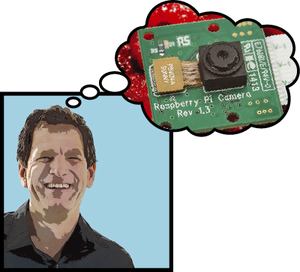Snapshot
Joe Casad
The remarkable Raspberry Pi has spawned a myriad of supporting projects – Android apps, program libraries, specialized Linux distributions, and an assortment of hardware accessories. The rapid changes within these projects is testament to the excitement and enthusiasm that developers around the world have given to the Raspberry Pi.
Technology changes fast in this life. Moore's law, that mystical conjecture that has ruled the evolution of processor chips for 48 years, predicts a 100% increase in processor capacity every two years. You buy a mobile phone and think it is brand new, and a year and a half later it is out of date. OS versions have a shelf life of a year, or even six months. Yet even in this world of rapid evolution, the Raspberry Pi universe seems to inhabit a particularly accelerated reference frame.
The remarkable Raspberry Pi has spawned a myriad of supporting projects – Android apps, program libraries, specialized Linux distributions, and an assortment of hardware accessories. The rapid changes within these projects is testament to the excitement and enthusiasm that developers around the world have given to the Raspberry Pi.
One of the most exciting recent additions to the Raspberry Pi environment is the Pi camera module add-on board, which was officially released earlier this year. The Pi camera opens the door to whole new categories of home-built projects. Let the Pi snap pictures while you're away. Build the camera into your scripts; use the live eye of the Rasp Pi camera to measure light or recognize patterns.
[...]
Use Express-Checkout link below to read the full article (PDF).








